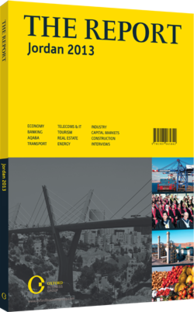On the up: A changing legal environment is helping support the growth of the sharia-compliant segment
Home to three local Islamic banks and one foreign insti-tution, Jordan has seen strong growth in Islamic bank-ing in recent times. While the sharia-compliant segment remains small compared to that of some other Islam-ic states, interest is building in its development, with legislative reforms helping to broaden and deepen the country’s Islamic financial sector overall.
RECENT ENTRANTS: The Islamic finance story began in Jordan in 1978, when Banking Law 13 received endorsement, clearing the way for the establishment of Islamic banks. The first into the field was the Jordan Islamic Bank (JIB), which started work the same year and had the market to itself for two decades until the entrance of Islamic International Arab Bank (IIAB) in 1998. These two were followed in 2009 by Jordan Dubai Islamic Bank (JDIB), which converted from a conven-tional bank. In 2010 the first foreign entity, Al Rahji Bank (ARB), entered the market. Meanwhile, the legal framework had also advanced, via a dedicated chap-ter of the 2000 Banking Law.
The segment’s share of the banking industry has shown continuous growth since it began. In 2000 JIB and IIAB accounted for 7.6% of the sector’s total assets, with conventional banks constituting 92.4%. By 2009, before the entry of JDIB, those percentages had changed to 11.4% and 88.6%, respectively, according to figures from the Association of Banks in Jordan.
Since then, the percentage has most likely contin-ued to rise. No official figures were available at time of press, but the two listed Islamic banks, JIB and JDIB, have certainly seen good results in the last two years – the former reporting 11.3% asset growth in 2011, while the latter reported 30.7% rise in assets. For 2012, JIB report-ed a further 4.2% asset growth, to JD3bn ($4.2bn), with profits up 29% to JD36.5m ($51.3m). JDIB, meanwhile, had yet to report its full 2012 results, but for the third quarter of 2012, total assets stood at JD379m ($533m), up from JD350m ($492.3m) at the same time in 2011. Given that the sector’s total assets were JD37.8bn ($53.2m) in May 2012, according to Jordinvest, the two listed Islamic banks alone likely held around 8-9% of total sector assets around that time.
ROOM FOR GROWTH: The figures for JIB and JDIB show the potential for Islamic banking in the Muslim-major-ity country. While many potential customers simply look for the most price-effective banking, sharia-compli-ance is an issue for others, as the growing customer bases of the listed banks demonstrate. In 2010-11, for example, JIB saw its number of active savings accounts rise from 805,500 to 828,500.
According to a 2012 report from the Kuwait Finance House, the assets of the Islamic banks saw a compound annual growth rate of 18.3% between 2009 and 2011, with total deposits and financing outstripping growth in the conventional sector. The former rose 16.35% between 2010 and 2011, and the latter rose 15.58%, while the conventional loans, advances and deposits only increased by around 10%.
Where the Islamic sector currently experiences chal-lenges, though, is in the dearth of locally available sharia-compliant investment instruments. The first sukuk(Islamic bond) issued in the country was in 2011, when Al Rajhi Cement issued a $120m Al Ijara sukuk. It was extremely popular, but has yet to be followed up.
This places the Islamic banks in a difficult position when it comes to investment and meeting reserve ratios.
Banks are obliged to look elsewhere for coverage. The small size of the Islamic insurance sector also limits the opportunities available locally (see Insurance chapter).
NEW DEMAND: This may be changing, however, as the sukuk market picks up. The government has a large fis-cal deficit to finance, and in September 2012, a law paving the way for sovereign sukuk issues was finally passed. Given the strong global appetite for sukuk, such sovereign issues may be at much more beneficial rates for the government than conventional issues. In addi-tion, the government issued a legal framework for ful (Islamic insurance) in 2011, with high hopes that the development of a stronger Islamic insurance sec-tor will benefit banks and Islamic finance in general.
You have reached the limit of premium articles you can view for free.
Choose from the options below to purchase print or digital editions of our Reports. You can also purchase a website subscription giving you unlimited access to all of our Reports online for 12 months.
If you have already purchased this Report or have a website subscription, please login to continue.

